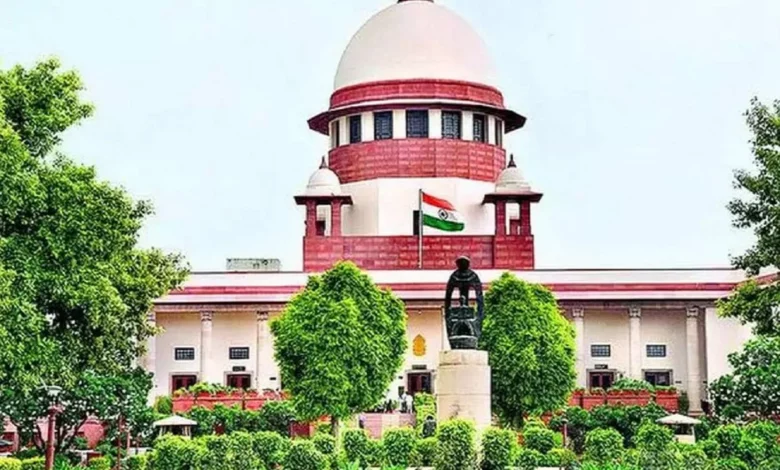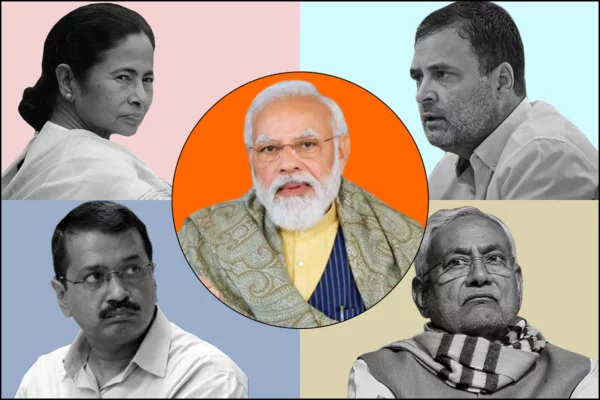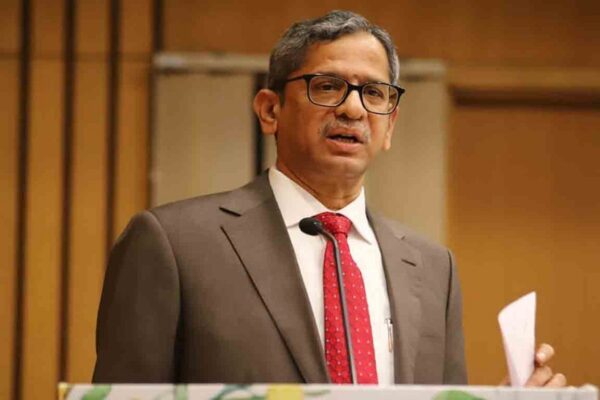The Freebies Debate: Should Supreme Court Engage With A Subject That Falls Outside Its Purview?

The Freebies Debate: Should Supreme Court Engage With A Subject That Falls Outside Its Purview?
The Supreme Court began hearing public interest litigation (PIL) earlier this month against the practice of political parties distributing goodies to obtain votes during elections.
While the Bharatiya Janata Party (BJP) spokesperson and attorney Ashwini Kumar Upadhyay filed the PIL, prime minister Narendra Modi’s recent “revdi culture” jab, in which he cautioned the youth against opposition parties’ attempts to win votes by giving out free revdis, is thought to be the origin of the most recent debate on freebies (sweets).
The Aam Aadmi Party (AAP) and the Dravida Munnetra Kazhagam (DMK), which are now in power in states with heavily welfare-oriented policies, have both expressed outrage at the comment and the PIL, raising the issue of what really qualifies as “freebies.”
The political brawl over freebies is nothing new, but several people were taken aback by the SC’s immediate response. The Chief Justice of India N.V. Ramana-led SC bench proposed the creation of an expert body to address the issue of freebies and election promises during the PIL hearing on August 3.

This body would include representatives from the Niti Aayog, Law Commission, Finance Commission, Reserve Bank of India, and members of the ruling party and opposition parties.
In order to be able to issue the order for the committee’s formation, the top court also requested proposals from the petitioner, the government of Canada, and the Election Commission. It’s interesting that EC has already opted not to participate.
According to experts, economists, and other stakeholders, this is a complex political issue because the concept of what is referred to as a freebie encompasses many different dimensions of socio-economic welfare.
Constitutional scholar and SC attorney Abhilash M.R. claim that the SC is engaging in judicial overreach and that the committee would be more legitimate and have a double impact if it had been established within the SC’s walls.
“The first is that it erodes democratic procedures. The other is that no political party will ever be interested in such a sanctimonious Supreme Court intervention. This will only damage the judiciary’s reputation. They are trespassing into territory that they are not supposed to enter. Orders of this sort would continue to be ignored as the political class began to lose interest in the judiciary. What exactly is at risk? The institution (of justice),” he claims.
Because the court established a committee, no party will for sure say goodbye to political favours, and the advocate continues.
Getting The Term Right
At the PIL’s most recent hearing on August 17, the SC bench questioned if the pledge to provide free and mandatory education to everyone could be described as a freebie.
“Can we call the pledge to provide small and marginal farmers with subsidies on power, seeds, and fertilizers in order to make agriculture profitable a freebie? Can we call the promise of free and universal health care a freebie? Can we call the pledge to supply safe drinking water to every citizen free of charge a freebie?” The bench took notice.
The SC joining the discussion has brought the term’s etymology back into focus. While politicians and policymakers have tossed the term around, there is no explanatory or economic definition of the term. Generally speaking, it is used to refer to welfare programs that political parties offer to those who are socially and economically underprivileged.
While there is no precise definition of a freebie, according to NR Bhanumurthy, vice chancellor of the Dr B.R. Ambedkar School of Economics University, any policy initiative that results in the exploitation of natural resources could be considered to be a freebie. According to him, anything that causes the public debt to rise over the long term could be considered a “freebie” from a financial standpoint.
Devendra Pant, the chief economist at India Ratings & Research, said the Pradhan Mantri Jan Arogya Yojana was a direct intervention on behalf of the government. “Is that a freebie? Or will the reduction in fuel excise taxes, which benefits the urban middle class, be referred to as a freebie? It is a vague term with no definition, he continues.
According to Pant, the entire discussion rests on definitions. For some, encouraging industry through tax cuts or lowering fuel prices through excise reduction would not look like freebies, while others could identify them as such.
The question of what constitutes a good or bad freebie is ultimately and always a political choice. According to Yamini Aiyar, president and chief executive of the Centre for Policy Research, in a piece published in The Indian Express, “A fruitful discussion must inevitably take place inside the broader political, economic, and institutional framework that our electoral politics operate within.
Politics Of Poll Promises

You cannot stop a political party or individual from making pledges that are intended to carry out this constitutional obligation if they are elected to power, CJI Ramana added during the most recent session of the SC. “The question is what actually counts as a valid promise,” the CJI noted, noting that political parties have lost elections despite promising freebies.
AAP filed an application in opposition to the PIL, arguing that electoral promises like free water, power, or public transportation were not freebies but rather examples of the state failing to uphold its constitutional obligations to create a more just society. AAP has made a number of promises, including providing free water and power, in the lead-up to Punjab’s assembly elections.
The PIL, according to AAP, wants legal action against the welfare model of economic development and singles out states for their welfare spending even though it purports to be against freebies.
Arvind Kejriwal, the Delhi chief minister and leader of the AAP, has defended his government’s spending on welfare programs related to electricity, education, and health, among other aspects, ever since PM Modi’s “revdi” jab and has even attacked the ruling party without naming it on several occasions.
The finance minister, Nirmala Sitharaman, had reacted to AAP’s comments by saying, “Delhi Chief Minister has given a perverse twist to the debate on freebies. Healthcare and education have never been described as freebies.
She further added that by labelling them as freebies, Kejriwal was attempting to instil a sense of dread and fear in the minds of the underprivileged. No Indian administration has ever rejected spending on health and education, she said.
M.K. Stalin, the chief minister of Tamil Nadu, backed up Kejriwal’s argument by saying that spending on health and education cannot be gratuitous. “These are social welfare measures, not freebies. He was quoted as saying at a recent event in Business Standard that these are put in place to assist the underprivileged and outcasts.
Stalin had added, “Some people have suddenly recently surfaced with the idea there should be no freebies,” in an obvious jab at PM Modi. We are unconcerned about that (sic).”
After AAP decided to get involved, DMK decided to do the same and knocked on the SC’s door to request inclusion in the PIL. “It is respectfully proposed that a welfare program be established that provides a free service with the aim of ensuring social order and economic fairness in accordance with Article 38.
This will help to decrease gaps in income, status, resources, and opportunities. In no situation could it reasonably be regarded as a threat? In order to meet the necessities that low-income people cannot afford, these initiatives have been established. According to a Live Law report, it contended that they cannot be regarded as a luxury.
Furthermore, the party stated that just a state government-implemented welfare scheme may be regarded as a freebie and that the Union government extending tax breaks to foreign corporations, waiving bad loans of powerful industrialists, awarding crucial contracts to preferred conglomerates, and so on must also be included.
Faultlines In India’s Growth Story
The creation of more jobs was a key component of India’s economic liberalization argument. It was anticipated that the extra agricultural labour would be utilized in industry, resulting in increased social and economic mobility for the populace. However, the truth was rather different.
The majority of the jobs that were created in India after the 1990s were in the services sector, where manufacturing is still striving to make a name for itself. In a report, economist Amit Basole stated that the majority of the jobs India created during its period of rapid economic expansion were mostly of an informal kind.
As a result, whereas post-liberalization growth helped some people escape poverty, it also brought about structural disparities. Even those who were fortunate to escape poverty have been placed in precarious positions. Data from the World Bank showed that, between 2005 and 2012, people who were able to escape poverty could fall back into it after just one unexpected financial shock.
According to the World Inequality Report, India’s private wealth to national income ratio increased from 29% in 1980 to 555% in 2020. The survey indicated that 57% of the nation’s income is held by the richest 10% of the population. The Covid-19 outbreak made people more conscious of their position in India’s growth story and showed the neo-liberal economic system’s limitations.
During the most recent hearing for the PIL, the CJI stated, “I don’t think people are seeking freebies. If given the chance, they will seek respectable remuneration. We have instances of programs like the Mahatma Gandhi Rural Employment Guarantee Scheme, which provided rural India with opportunities for decent employment while simultaneously generating public assets, according to the CJI.

Entering the freebie discussion would necessitate defining what is welfare and what is “free.” The Center provided free foodgrain during the pandemic. The majority of Indians were saved from famine by the Pradhan Mantri Garib Kalyan Anna Yojana, which made foodgrain available to 80 crore ration card users.
The public distribution system (PDS) has grown to be a significant political problem by the middle of the 2000s. In a number of southern states, lower PDS pricing became a political issue. In order to fight this, the National Food Security Act, which extended PDS coverage to two-thirds of India’s population, was unanimously approved by the Parliament in 2013. The scope of the exclusion shrunk as coverage expanded.
In the ongoing SC hearing on the PIL, the opposing party stated, “We are not against socialism, but if social welfare implies providing everything for free, then it is an immature view of the phrase social welfare.”
According to Dipa Sinha, a professor at Dr B.R. Ambedkar University in Delhi, when a government operates a welfare program, it is not provided free of charge.
The government doesn’t function like a monarchy that provides free services. The public is receiving funds that belong to the government. Taxes are collected and spent by a democratically elected government. Yes, there are checks and balances for accountability, such as the Constitution and Parliament.
Governments are merely performing their duties as long as events take place within that framework,” according to Sinha.
The Welfare Cost
The easiest way to criticize welfare expenditure is to point out the amount of debt it causes. An item in the RBI Bulletin recently criticized a few states for the poor situation of their finances and attributed it to “freebies” like power subsidies.
The piece makes note of the fact that according to the debt-gross state product (GSDP) ratio in 2020–21, Punjab, Rajasthan, Kerala, West Bengal, Bihar, Andhra Pradesh, Jharkhand, Madhya Pradesh, Uttar Pradesh, and Haryana have emerged as the states with the highest debt burdens, accounting for roughly half of the total expenditures by all state governments in India.
These states also happen to be Bihar, Andhra Pradesh, Jharkhand, and According to the study, West Bengal, Kerala, and Jharkhand all went over the 15th Finance Commission’s debt target for 2020–21. It’s interesting to note that several of the report’s indebted states have historically prioritized social welfare.
According to the study, “new sources of hazards have emerged—the resumption of the outdated pension system by numerous states, increased spending on non-merit awards, growing contingent liabilities, and the skyrocketing DISCOM arrears—meant for strategic remedial measures.”
Several economists have stated that debt is not inherently bad, but the nature of spending is. Spending on the social sector is required to offer a safety net to the weak, which will eventually assist them in achieving self-sufficiency.
“Governments all over the world implement interventions like providing free healthcare or education to the underprivileged. It shouldn’t be an issue if these services are targeted. There is a significant risk of leakage in universal [schemes]. The issue today is whether different governments can carry out a greater number of initiatives given their limited fiscal capacity,” according to Pant.
According to Abhilash, the concept of a freebie will fade as the quality of the political demographic improves, which occurs with more literacy, social-economic well-being, and political awareness.
Regarding the SC, CJI Ramana summarized the main grounds of a dispute during the most recent hearing by noting, “Concern is about the right approach of spending public money… Some claim that freebies waste the hard-earned money of taxpayers.
Others agree, arguing that public funds should always be used for welfare programs. Is this court qualified to consider these issues? The problem is becoming more challenging. As the SC works to resolve this complex controversy, all eyes are now focused on the upcoming hearing on August 22.
edited and proofread by nikita sharma




